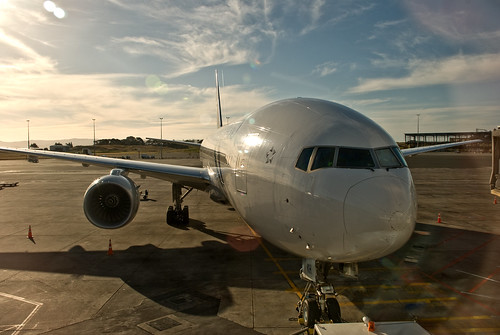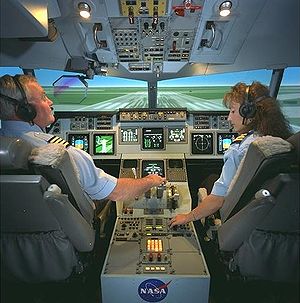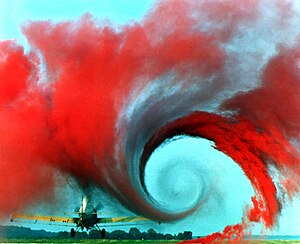By
Jon PickeringGeneral Aviation in the twenty first century desists in pursuing the technology of it's larger heavier cousins. Affordable computers and new technology has now bridged the chasm between GA aircraft avionics suites and the glass cockpit behemoths of the sky, and to the private pilot, offers an exciting new dimension to flying.
There can be no doubt that such instrumentation offers extra safeguards with visual representation of terrain, moving maps and courses, you name it, it's all there at a glance. Everyone would agree that such instrumentation offers the VFR pilot a level of safety, never enjoyed before, and yet, some would argue (myself included) that the temptation of a glass presentation might encourage the pilot to push into an ever deteriorating situation that he or she may not have previously considered pushing had their aircraft been furnished with analogue gauges. We should not forget that a VFR pilot with a thousand hours, is still just a VFR pilot, and only trained to that level, and is required to have their eyes on the natural horizon. With the introduction of glass cockpits in GA, there will be a natural tendency for those pilots to start spending more of their time inside the cockpit. VFR pilots delighted with their new modern avionics will find themselves relying on it more and more and may result in getting into more trouble with it than if they were without it in the first place. Without the correct training and guidance, the outcome could be disastrous, as the pilot will be have been lulled into a false sense of security thinking that they are equipped to deal with situations that will likely spiral out of control.
There are many varied types of pilots, but we can reduce them to two kinds. Visual pilots and number pilots. Most of you will fall into the visual category, the remainder of us are number pilots, and then there are the very few who are adept at both. My friend and colleague is a visual pilot but is a very accomplished IFR pilot also. He uses a visual picture in his mind, but uses numbers to confirm his situational awareness picture. I myself am a number pilot, all the way, and do not use a visual picture at all, the numbers tell me everything I need to know. Number pilots I think, will make generally better IFR pilots than there visual counterparts. It is important to clarify however, whatever kind of pilot you happen to be, neither one way or the other is right or wrong, ultimately, your training should be tailored for the way your mind processes information.
And so, we have reached the point and subject of this article. Adding the IFR rating to your certificate, old analogue or new glass?
As most of you know, GPS, EFIS systems employ satellites to compute a position in space, and presents that information to you on a colourful logical display, complete with terrain, intersections, and all manner of numbers in the form of a tape, like headings, courses, altitudes and the list goes on. Essentially, your being presented visual and numerical information. The currant land based navigation system for pilots is usually in the form of V.O.R's and N.D.B's. Although N.D.B's are officially being phased out, the V.O.R system will be with us for the foreseeable future and most GA aircraft use this type of navigation coupled with Distance Measuring Equipment. (D.M.E) So, which system do you decide to use to acquire you IFR rating? Having spoken to a good cross section of people including D.P.E's (Designated Pilot Examiners), FAA inspectors, other CFII's it seems the general consensus of opinion is that it would be advantageous to the IFR candidate to learn the V.O.R based system first, acquire the rating and then transition to a glass system. If you happen to be flying an aircraft that has both the analogue system and a say a Garmin 530 also, you will have to learn not only the analogue system but also learn to use the GPS system also, the rule states that you must be able to use the equipment that is in the aircraft. This will add extra training hours to your rating. If your a renter, and wish to rent an aircraft that has analogue gauges, and you decided to learn on a glass system, odds are when you go to rent that aircraft, you will not be able to fly IFR with it. Simply put, you will be incompetent to fly that system. The final conclusion, you are, and always will be, so long as the old system is around, an incomplete, and sub-standard IFR pilot.
Case in point, an young airline pilot who visited Kona some time back, wanted to rent a Cessna 182, no GPS of any kind, could he file IFR, no he could not. Why? He learned on a E.F.I.S and was unable to fly IFR using the analogue gauges, he even admitted as such. He was however willing to give it a whirl, I won't bore you with the details, except to say he was not much better than a VFR pilot. The simple fact of the matter is, not to learn the land based V.O.R system of IFR puts you at such a disadvantage, it clearly is detrimental to your skills as an IFR pilot. It will be far easier to advance to glass systems than to learn on a glass system and then go back, who goes back to old systems when you have learned a new one? Remember, once you have your ticket in hand, you can transition at your leisure to any glass system you want to fly. In today's world, everyone is after instant gratification, ten day Instrument Ratings, bare bones minimum standards as stated in the P.T.S and bare bones minimum hours, as little studying as possible. If that's the kind of IFR pilot you want to be, good luck, fact is you will probably end up on a piece of government paper as another FAA statistic, because you just won't be prepared to fly real solid IFR when the time arrives, and it will some day. Any pilot with mediocre skill can fly IFR when all is hunky dory, it's when you have an instrument failure or two, it's night IFR, the weather is bad, visibility is nothing and the only company you have are the outside strobe lights and yourself, that's when the true test of your instrument training will be revealed. The simple fact of the matter is, your standard of IFR piloting will be considerably higher having mastered a analogue system first. One last note before I conclude this article, if you do have anyone else in the plane with you, you're responsible for their lives, get the picture?
Greetings everyone, Jon here, I am a CFII here in Kona Hawaii. I take flight training very seriously and in particular, the instrument rating. I am interested only in excellence and making you the best IFR pilot out there. Please feel free to visit my website at http://www.herculesflightservice.com for more information. If you have any questions, email me and I will be happy to provide you with an answer.
Article Source: http://EzineArticles.com/?expert=Jon_Pickering
http://EzineArticles.com/?Instrument-Flight-Training---Old-Analogue-Or-New-Glass&id=3048971
 Todays increase in airline usage - coupled with higher oil prices and increasing costs - has put a premium on airline occupancy. Recent airline earnings declarations have shown varied seat occupancy rates over the last 12 months. But one thing is for sure: The Holy Grail of airlines is to have every seat occupied on every flight. In reality this seldom happens. Some airlines (you know who you are) manage to fill these seats by offering 'free tickets' (which are then loaded up with additional charges and surcharges for everything from choosing your seat to breathing fresh air (Ok, I jest about the air, but it could happen!))
Todays increase in airline usage - coupled with higher oil prices and increasing costs - has put a premium on airline occupancy. Recent airline earnings declarations have shown varied seat occupancy rates over the last 12 months. But one thing is for sure: The Holy Grail of airlines is to have every seat occupied on every flight. In reality this seldom happens. Some airlines (you know who you are) manage to fill these seats by offering 'free tickets' (which are then loaded up with additional charges and surcharges for everything from choosing your seat to breathing fresh air (Ok, I jest about the air, but it could happen!)) utes so how can we maximise the revenue from the empty seats?". This solution is neat because it increases income, has a marginal overhead (An empty seat does not need feeding and needs no extra fuel to carry the occupant and baggage to the destination), and more importantly it gives the passenger something he or she would not normally get - an economy class bed. The question (As posed by this article from Flightblogger) is "Can Air New Zealand make more money from an 'empty' seat than from one that is occupied?"
utes so how can we maximise the revenue from the empty seats?". This solution is neat because it increases income, has a marginal overhead (An empty seat does not need feeding and needs no extra fuel to carry the occupant and baggage to the destination), and more importantly it gives the passenger something he or she would not normally get - an economy class bed. The question (As posed by this article from Flightblogger) is "Can Air New Zealand make more money from an 'empty' seat than from one that is occupied?"



